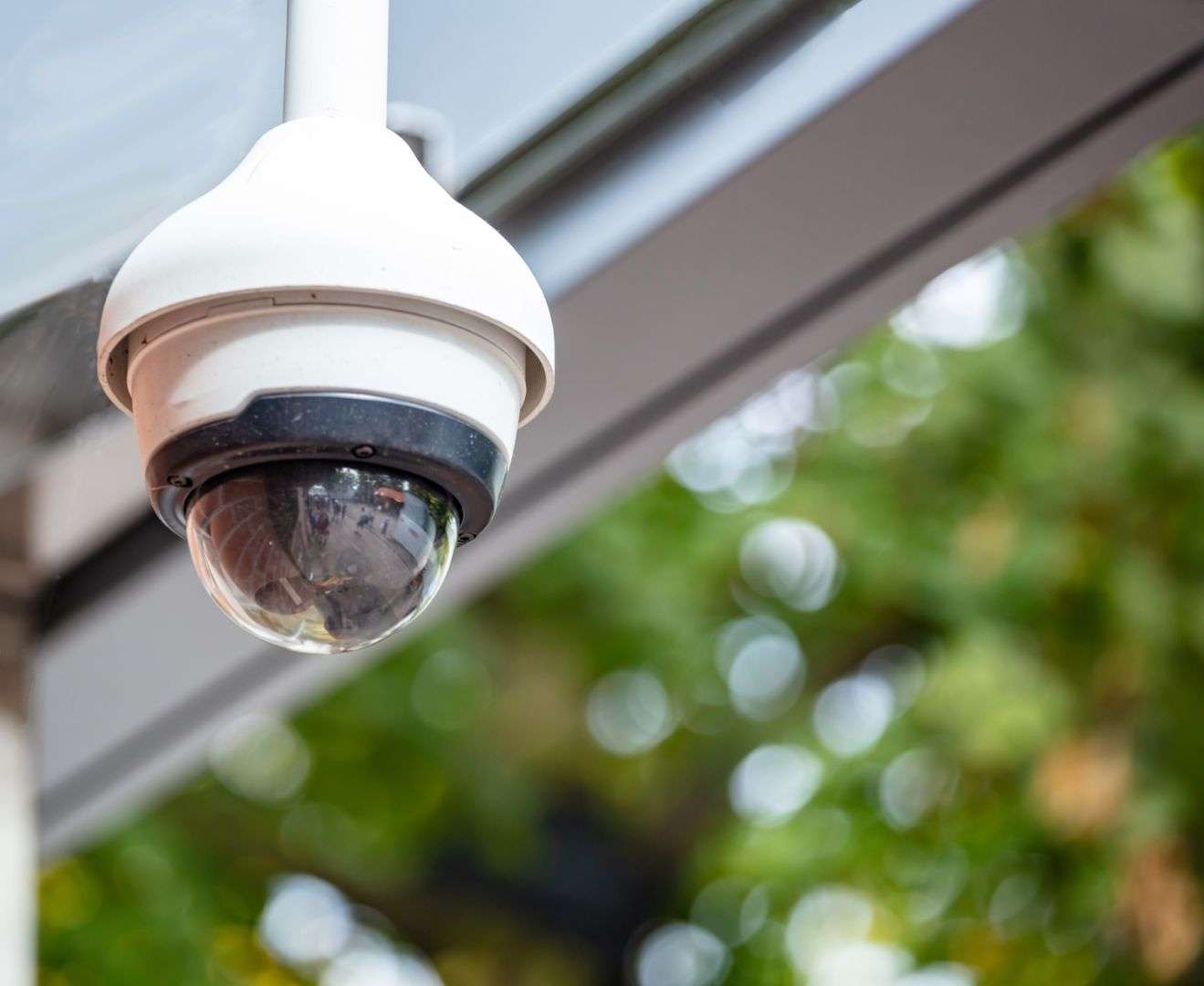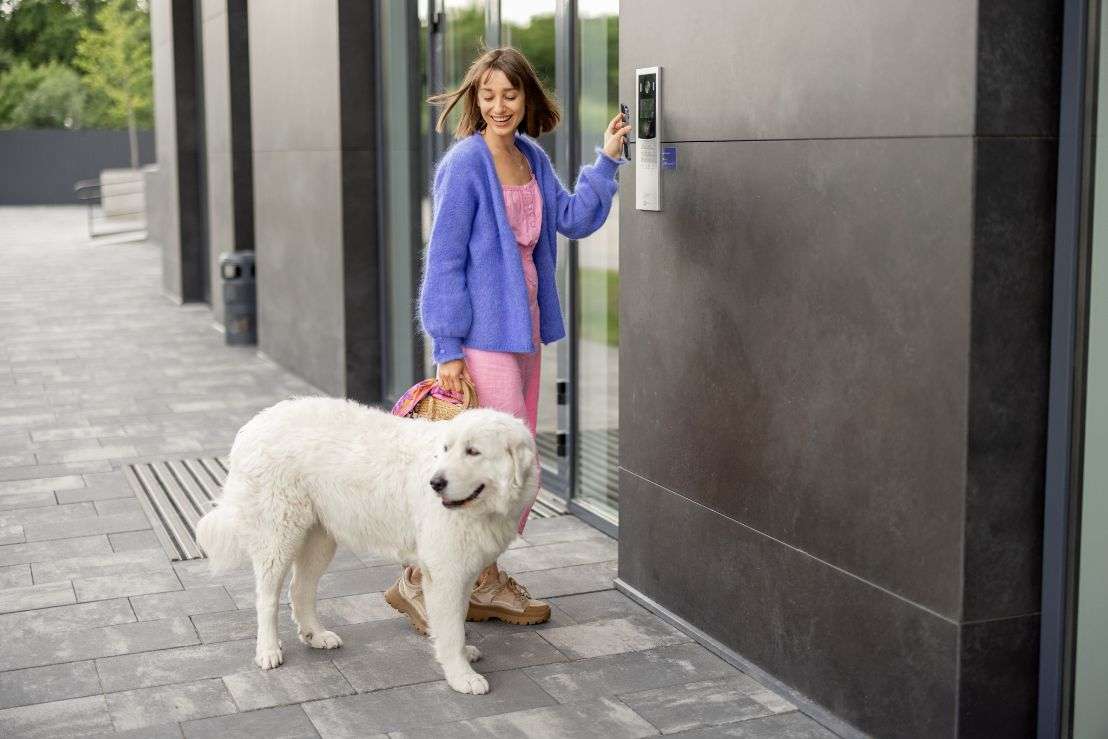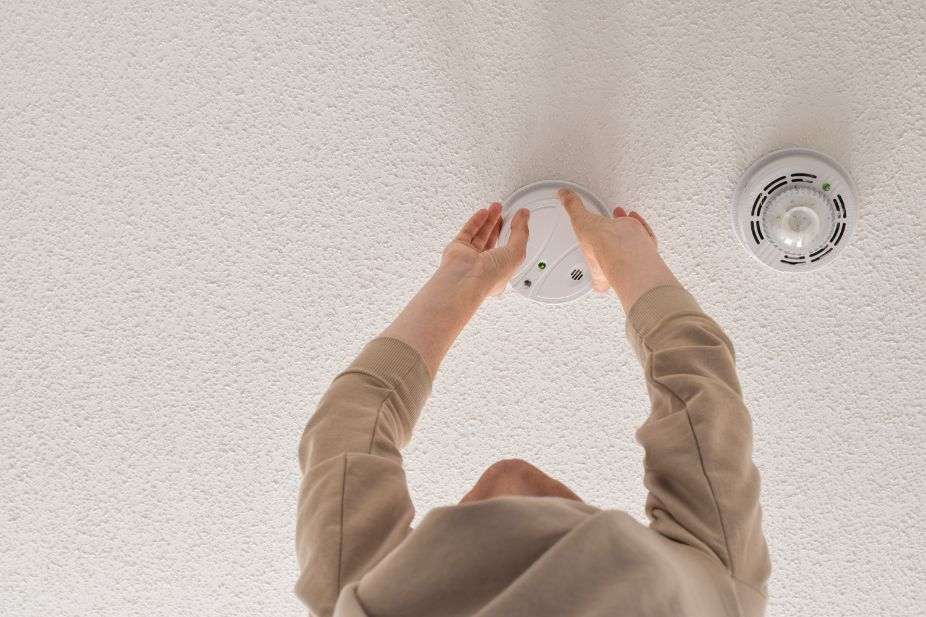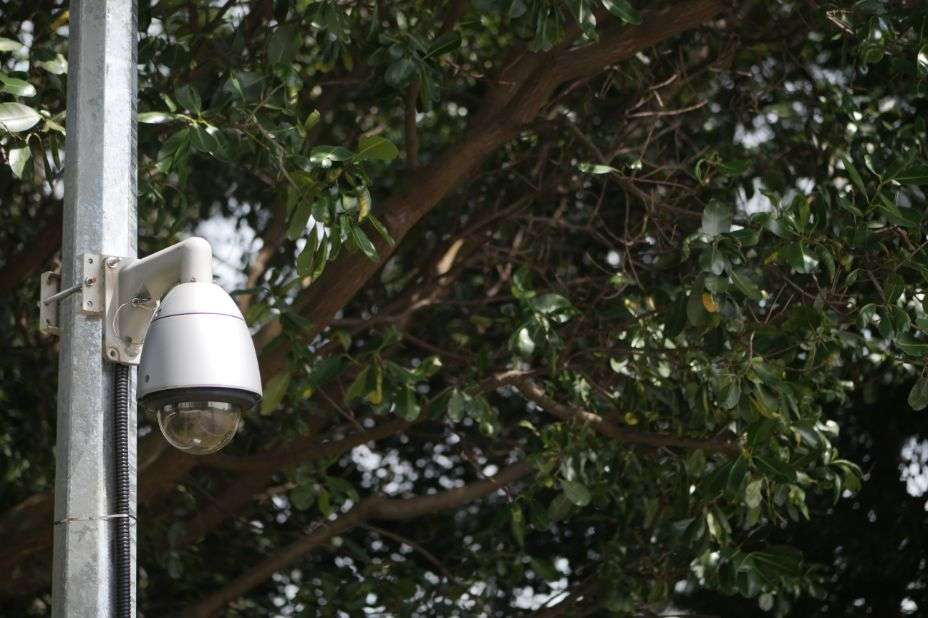Home security systems are designed to meet different security needs and preferences. What are the different types of home security systems? Homeowners have a plethora of options to choose from when it comes to safeguarding their properties. From traditional burglar alarm systems to cutting-edge smart home security systems, as well as comprehensive video surveillance setups, access control systems, environmental monitoring solutions, and robust outdoor security measures, there’s a diverse array of choices available to meet your specific security needs. Let’s explore several typical varieties of home security systems!
- Burglar Alarm Systems
- Video Surveillance Systems
- Smart Home Security Systems
- Access Control Systems
- Environmental Monitoring Systems
- Outdoor Security Systems
Burglar Alarm Systems

In the quest to secure our homes and safeguard our loved ones, burglar alarm systems have emerged as an indispensable tool. These systems serve as the first line of defense against unauthorized intrusions, providing homeowners with a sense of peace and security. In this essay, we will delve into the world of burglar alarm systems, exploring their essential components, functions, and their role in modern home security. Burglar alarm systems, often called “security alarms,” are electronic systems designed to detect unauthorized entry or access into a building or area. Their primary purpose is to alert homeowners, occupants, or security personnel to the presence of an intruder, prompting immediate action to mitigate potential threats.
The core components of a typical burglar alarm system include sensors, a control panel, and an audible or silent alarm. Sensors are strategically placed at vulnerable points such as doors, windows, and other potential entry points. These sensors can take various forms, including magnetic contacts that detect door or window openings, motion detectors that sense movement within a defined area, and glass break detectors that respond to the sound of breaking glass. The control panel serves as the central hub of the system, where all sensor inputs are processed and analyzed. It is responsible for interpreting sensor signals and determining whether they indicate an unauthorized intrusion. When an intrusion is detected, the control panel triggers an alarm.
Burglar alarm systems are not limited to simply sounding an audible alarm. They have evolved significantly to incorporate various features and technologies to enhance their effectiveness.
Some modern systems can send alerts to homeowners or security personnel through smartphone apps or email notifications, allowing for real-time monitoring and response, even when homeowners are away from their properties. One of the critical advantages of burglar alarm systems is their deterrent effect. The mere presence of visible sensors or signage indicating the presence of a security system can dissuade potential intruders from attempting a break-in. This preventive aspect can significantly reduce the likelihood of a security breach.
Furthermore, many burglar alarm systems can be integrated into broader home security ecosystems, including video surveillance, access control, and environmental monitoring systems. This integration provides homeowners with comprehensive security solutions, enabling them to efficiently monitor their homes and respond to various threats. Burglar alarm systems play a pivotal role in enhancing home security by detecting and deterring unauthorized intrusions. These systems have evolved over time, incorporating advanced technologies to provide homeowners with not only peace of mind but also the means to respond effectively to security threats. As the need for home security continues to grow in an ever-changing world, burglar alarm systems remain a fundamental and reliable component of any comprehensive security strategy.
Video Surveillance Systems

In an era of advancing technology and increasing concerns about home security, video surveillance systems have become a ubiquitous feature of modern homes. These systems offer homeowners the ability to monitor and record activities in and around their properties, providing both a deterrent to potential intruders and a means to enhance overall safety. In this essay, we will explore the world of video surveillance systems, their components, functions, and their crucial role in contemporary home security. Video surveillance systems, often referred to as Closed Circuit Television (CCTV) systems, are a network of cameras strategically placed to capture visual information in and around a property. These cameras can be both visible deterrents and covert observers, depending on the homeowner’s preference. They are typically connected to a recording device or network video recorder (NVR), which stores the video footage for later review or reference.
The primary components of a video surveillance system include the cameras, the recording device, and the display or monitoring equipment. Cameras come in various types, including fixed cameras that focus on specific areas, pan-tilt-zoom (PTZ) cameras that can be controlled remotely to change their viewing angle, and dome cameras designed for discreet surveillance. These cameras can be positioned both indoors and outdoors to provide comprehensive coverage. The recording device, often an NVR or a Digital Video Recorder (DVR), is responsible for storing and managing the recorded video footage. Modern systems have advanced features such as motion detection, which triggers recording when movement is detected in the camera’s field of view. This reduces the amount of storage required and makes it easier to review relevant footage.
The monitoring equipment can include computer screens, smartphones, tablets, or dedicated monitors, allowing homeowners to view live or recorded footage remotely.
Many video surveillance systems now offer mobile apps that enable real-time monitoring and playback from anywhere with an internet connection, providing convenience and peace of mind. Video surveillance systems offer several benefits beyond deterring potential intruders. They serve as valuable evidence in the event of a security breach, helping law enforcement identify and apprehend suspects. Additionally, they can be used to monitor and protect family members, pets, and valuable possessions. Moreover, these systems are versatile and can be integrated with other home security components, such as burglar alarm systems and access control systems. This integration creates a comprehensive security solution that enhances the overall safety and protection of the home.
Video surveillance systems are a critical component of modern home security, providing homeowners with the ability to monitor and record activities in and around their properties. Video surveillance systems offer a means to extend care and protection to family members, pets, and cherished possessions. Whether it’s ensuring the safety of children playing in the yard, keeping an eye on elderly family members, or even tracking the activities of pets while homeowners are away, these systems offer peace of mind by allowing for real-time monitoring and remote access via smartphones and other devices.
Smart Home Security Systems

In today’s rapidly evolving world of home security, smart home security systems have emerged as a game-changing solution. These systems seamlessly blend advanced technology with automation, offering homeowners not only heightened security but also unparalleled convenience and control over their living spaces.
Smart Cameras
Smart cameras serve as the cornerstone of modern smart home security systems, bringing a host of innovative features to the table: Smart cameras capture high-definition video, ensuring clarity and precision in identifying individuals and objects within their field of view. This feature is particularly valuable when reviewing footage for security purposes or identifying potential threats. The inclusion of motion detection technology in smart cameras allows them to respond proactively to movement. When motion is detected within their designated area, these cameras trigger recording, providing homeowners with real-time alerts and an invaluable visual record of the event.
The two-way audio capability is a common feature in smart cameras, enabling homeowners to engage in real-time communication with visitors or potential intruders through built-in microphones and speakers. This remote interaction capability can serve both as a means of deterrence and as a means of providing instructions or assistance. Cloud storage is a significant advancement in smart camera technology, offering secure storage and easy accessibility to recorded footage. This cloud-based storage ensures that critical evidence remains intact and accessible, even if the camera itself is tampered with or damaged.
Smart Doorbells
Smart doorbells have gained widespread popularity for their ability to enhance doorstep security and simplify the homeowner’s experience. Video doorbells combine traditional doorbells with advanced camera technology, allowing homeowners to see and interact with visitors via a dedicated smartphone app. This remote interaction capability proves invaluable for verifying identities and assessing situations in real-time. Motion detection capabilities in smart doorbells are particularly useful for alerting homeowners to the presence of individuals approaching their front doors. These sensors trigger alerts and record when someone enters the camera’s field of view, providing homeowners with critical information about who is at their doorstep.
Some smart doorbell models offer advanced features such as package detection. With this functionality, the system notifies homeowners when deliveries are made, enhancing convenience and security, especially in an era of increased online shopping. Integration with other smart home devices, such as smart locks, is a hallmark of smart doorbells. This integration ensures that homeowners have a holistic and interconnected approach to security and access control.
Smart Locks
Smart locks are pivotal in granting homeowners enhanced control over access to their property. Keyless entry is a defining feature of smart locks. Homeowners can lock and unlock doors remotely via a dedicated smartphone app, a keypad, or even voice commands, eliminating the need for traditional keys and enhancing security. The ability to grant temporary access is a game-changer in smart lock technology. Homeowners can provide temporary codes or access permissions to visitors, guests, or service providers. This not only simplifies the process of granting access but also allows homeowners to monitor and control who enters their property. Real-time security alerts are another critical feature of smart locks. Homeowners receive notifications on their smartphones whenever doors are locked or unlocked, ensuring that they are always aware of access-related events, even when away from home.
Smart Sensors
Smart sensors form a crucial component of smart home security systems, providing comprehensive detection capabilities. Door and window sensors are essential components that trigger alerts when doors or windows are opened or tampered with. These sensors serve as the first line of defense, alerting homeowners to potential breaches. Motion sensors are designed to detect movement within predefined areas, often serving as an additional layer of security within a home. When motion is detected, these sensors can activate lights, cameras, or other security measures. Glass break sensors are specialized sensors designed to listen to the distinctive sound of breaking glass. When a potential break-in is detected, these sensors can trigger alarms and notifications, providing homeowners with advanced warnings.
Centralized Control
Centralized control hubs, typically in the form of smart speakers or dedicated hubs, serve as the command center for smart home security systems. Integration of various smart devices is a central function of these hubs, allowing homeowners to manage security, lighting, climate control, and more from a single, user-friendly interface. This integration ensures a cohesive and interconnected approach to smart home automation and security.
Voice commands are a prevalent feature in many centralized control hubs, making it effortless for homeowners to control security features through simple, intuitive verbal instructions. This hands-free approach adds an extra layer of convenience and accessibility. Remote access capabilities ensure that homeowners can monitor and control their smart security systems from virtually anywhere with an internet connection. This remote access via smartphone apps or web interfaces provides peace of mind and ensures that homeowners remain connected to their security system at all times.
Access Control Systems

In the landscape of contemporary home security, access control systems are a cornerstone, offering homeowners the means to efficiently manage and monitor entry and exit points. These systems seamlessly blend advanced technology with user-friendly features, elevating security while simplifying access management. One of the primary aspects of access control systems is the adoption of keyless entry solutions, redefining the way homeowners control access to their properties. Electronic keypads, RFID card systems, and even biometric authentication methods such as fingerprint or retina scans eliminate the need for traditional keys, enhancing security and convenience. What sets access control systems apart is their capacity for remote access management. Through dedicated smartphone apps, homeowners can grant or revoke access permissions from anywhere, enabling them to retain control even when they are away from home. This remote access extends to the ability to grant temporary access to visitors or service providers, a feature that adds a layer of convenience and security.
Furthermore, access control systems provide real-time security alerts, ensuring that homeowners remain informed about access-related events. Entry and exit notifications sent to smartphones or other devices allow homeowners to stay aware of who enters or exits their property. Additionally, tamper alerts are integrated to detect and report unauthorized attempts to bypass or damage the access control system, providing early warnings of potential security breaches. Access control systems also excel in their ability to integrate seamlessly with other home security components, promoting a unified approach to security. By linking access control with video surveillance systems, homeowners can associate access events with recorded video footage, enhancing security through visual records.
Smart lock integration ensures that doors are locked and unlocked in sync with access permissions, streamlining access management and reinforcing overall security. Intercom systems further enhance access control by facilitating communication and verification before granting entry. Two-way communication and video intercoms allow homeowners to interact with visitors, verify their identities, and make informed decisions about granting access. These systems not only bolster security but also provide peace of mind. Customizability is a hallmark of access control systems.
Homeowners can create tailored access profiles for different users and scenarios, defining specific access permissions and schedules. This level of control ensures that individuals have appropriate access levels while maintaining security and convenience.
In summary, access control systems play an integral role in modern home security, offering homeowners a comprehensive and highly adaptable solution for managing and monitoring entry and exit points. With keyless entry solutions, remote access management, real-time security alerts, integration capabilities, intercom systems, and customizable access profiles, these systems empower homeowners with advanced security features while simplifying access control. As technology continues to advance, access control systems are poised to remain a pivotal element in ensuring that homeowners can confidently manage and secure their properties.
Environmental Monitoring Systems

Comprehensive home security and environmental monitoring systems have emerged as indispensable tools, serving as the frontline defense against a wide range of unforeseen threats. These advanced systems are designed to detect environmental hazards swiftly, empowering homeowners to respond effectively and protect both their property and loved ones. Key components of these systems encompass smoke and carbon monoxide detection, flood and leak sensors, as well as temperature and humidity monitoring.
Smoke and carbon monoxide detectors
Smoke and carbon monoxide detectors, integrated into environmental monitoring systems, operate as early warning systems. Continuously monitoring air quality, smoke detectors promptly sound alarms and send alerts at the very first hint of smoke, offering occupants the earliest possible warning in the event of a fire. Similarly, carbon monoxide detectors vigilantly track air quality for the presence of this colorless, odorless gas, sounding alarms and issuing alerts when hazardous levels are detected. These detectors are critical in ensuring the safety of occupants in emergencies.
Flood and leak sensors
Flood and leak sensors play an equally vital role in these systems by preventing water damage, a common yet costly household peril. Flood sensors, strategically placed in areas prone to water accumulation, such as basements and laundry rooms, trigger immediate alerts and alarms when they detect rising water levels, enabling homeowners to intervene before extensive damage occurs. Leak sensors, on the other hand, are attuned to even minor water leaks, such as those from faulty pipes or appliances. Their early detection capabilities empower homeowners to take prompt action, minimizing damage and associated repair costs.
Temperature and humidity monitoring
Temperature and humidity monitoring, integral to environmental systems, enhances both comfort and safety. Temperature sensors oversee indoor climates, issuing alerts if extreme temperatures are recorded. This function helps protect homes from freezing pipes in winter or excessive heat during summer months. Humidity sensors monitor moisture levels in the air, a critical aspect of mold prevention. Timely humidity tracking helps prevent mold growth, which can be detrimental to property and occupants’ health. What sets environmental monitoring systems apart is their potential for integration with home automation platforms, enabling a more holistic approach to security and convenience. These integrated systems can send alerts directly to homeowners’ smartphones or devices, allowing for immediate responses, even when they are away from home.
Outdoor Security Systems

In the comprehensive domain of home security, outdoor security systems have emerged as indispensable components, expanding the shield of protection to encompass the entire perimeter of a property. These systems deploy advanced technology and specialized equipment to create a robust defense mechanism against intruders and external threats. They comprise several essential elements that work in tandem to fortify security, ensure peace of mind, and deter potential breaches. Smart lighting is a fundamental feature of outdoor security systems, illuminating the dark spaces around a property to thwart intruders. These systems incorporate motion-activated lights that respond to detected movement by flooding the area with light. This sudden illumination not only acts as a powerful deterrent but also provides enhanced visibility for outdoor cameras to capture events accurately. Additionally, programmable timers enable homeowners to automate lighting schedules, simulating occupancy and enhancing overall security.
Perimeter sensors play a crucial role in detecting unauthorized entry into the property. Infrared beam sensors, for example, emit beams of infrared light that, when disrupted by an intruder, trigger alarms or notifications. These sensors are often employed to safeguard specific areas like fences or gates. Wireless outdoor sensors offer versatility by allowing placement at strategic points around the property. Using various technologies, including infrared and microwave, these sensors detect movement and intrusion. Audible alarms and notifications are vital components of outdoor security systems. In the event of a security breach, loud sirens and alarms serve the dual purpose of deterring intruders and alerting neighbors to the situation. Additionally, homeowners receive instant notifications on their smartphones or devices when the security system is triggered. This real-time communication empowers homeowners to take swift action and engage in remote monitoring, even when they are away from home.
Integration with indoor security systems and home automation platforms ensures a unified approach to security.
This integration enables homeowners to monitor both indoor and outdoor security components from a single interface, offering a comprehensive view of their property’s security status. Furthermore, it allows for automation control, where responses to security events can be automated, such as turning on interior lights when outdoor motion is detected or arming the indoor security system when an outdoor sensor is triggered. The benefits of outdoor security systems extend far beyond mere deterrence. They offer a peace of mind that comes from knowing that one’s property is well-protected, even in their absence. Moreover, they provide valuable documentation in case of an incident, aiding in identifying intruders and offering evidence for law enforcement. As these systems evolve with advancing technology, outdoor security systems will remain a cornerstone of modern home security solutions, reinforcing safety, and security.
In the ever-changing landscape of home security, these diverse systems – from burglar alarms to outdoor security measures – form an interconnected web of protection, ensuring that your home remains a fortress of safety. Whether you’re looking to fortify your indoor security, extend your watchful eye to the outdoors, or safeguard against environmental threats, the world of home security has a solution tailored to your needs. As you explore these advanced technologies and innovative features, remember that the true essence of home security is peace of mind. So, why wait? Take the first step towards fortifying your sanctuary and embracing a life empowered by safety in our product recommendation. Your home, your family, and your peace of mind deserve nothing less. Welcome to a safer, smarter, and more secure future!
